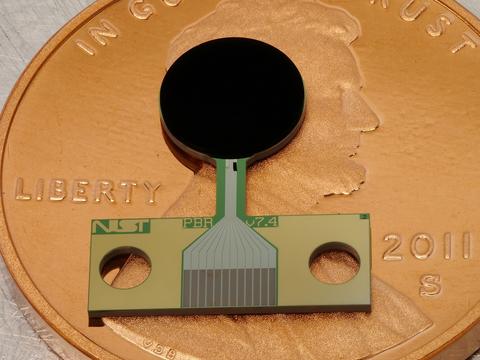Summary
Accurate characterization of photonic equipment is important for optical communications, medical devices, semiconductor lithography, manufacturing and materials processing. Accurate characterization of the solar irradiance and Earth radiance is of fundamental importance for weather and climate monitoring. The Photonic Radiometry Project develops the next generation of high-accuracy optical power measurement standards for laser power, detector spectral responsivity, detector linearity, the attenuation of transmission components, and space-based measurements of the Earth Radiation Budget. To calibrate detectors and instruments used to measure the power or energy produced by a laser, the sun, or reflected by the Earth, the project has developed a family of chip-scale bolometric standards that provide accurate , SI-traceable measurements of optical power with robust, micro-fabricated detectors. We are developing advanced microfabrication techniques coupled with carbon nanotube technologies to extend the performance of optical radiometric standards from room temperature to cryogenic temperatures, from the ultraviolet to the mm-wave, and from the laboratory to outer space.
Description

Meeting the needs of the photonics industry and anticipating emerging technologies requires investigation and development of improved measurement methods and instrumentation. This project develops state-of-art, absolute microfabricated thermal detectors with absorber coatings consisting of carbon nanotube arrays. Applications include laboratory primary standards, detectors for the key climate record Earth Radiation Budget, and single photon source and detector calibrations.
Major Accomplishments
- NIST bolometers in orbit in the Compact Total Irradiance Monitor and Compact Spectral Irradiance Monitor, www.nist.gov/measuring-cosmos/compact-spectral-irradiance-monitor, https://www.nist.gov/news-events/news/2022/11/measuring-sunlight-space-chip
- Established first primary standard to measure laser power by exploiting innovative microfabrication techniques and vertically aligned carbon nanotube coatings, which are the most light-absorbing, or blackest, material ever made.
- Scale realization for improving gravitational wave measurement

